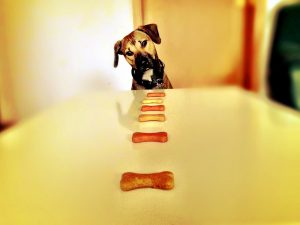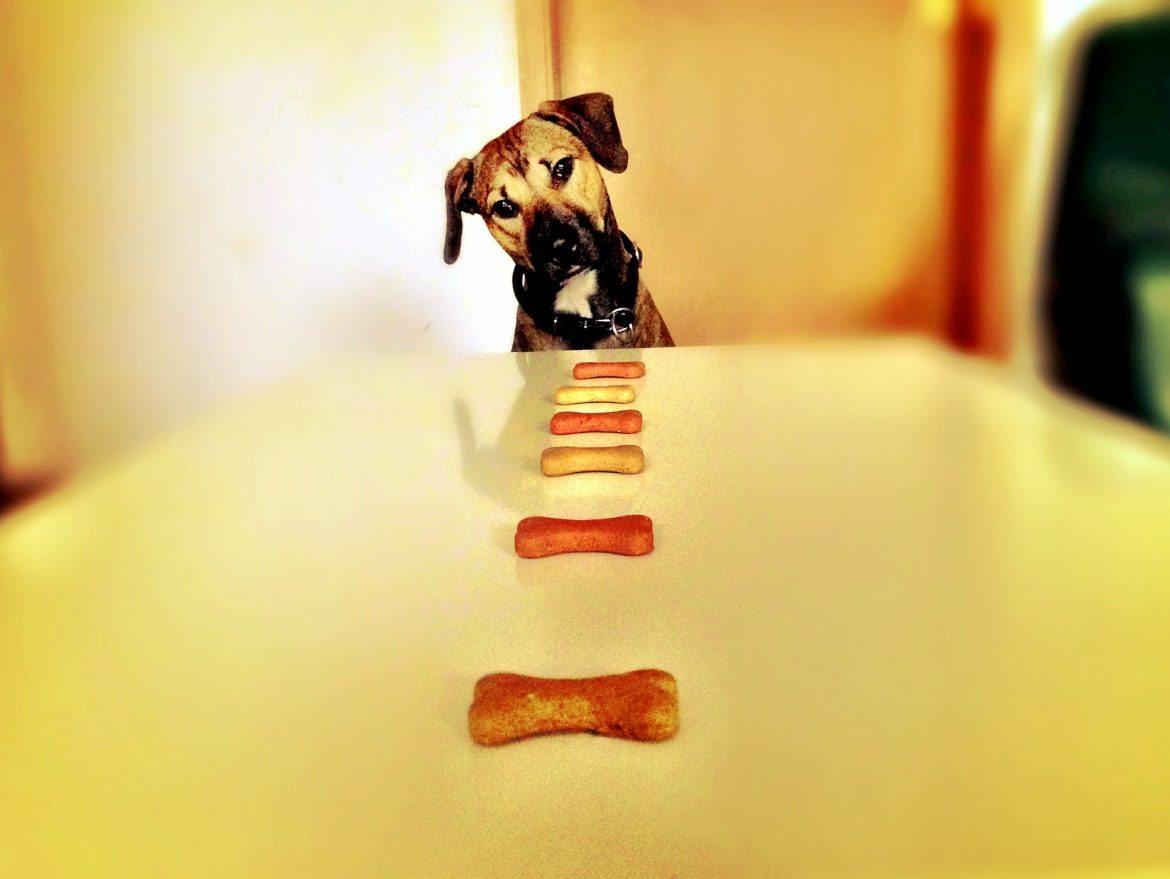You found your dog’s ideal food. You’ve calculated out how many grams they should eat in a day. And now you’re asking yourself: “How often should I feed my dog?” Two big meals? A sprinkling of mini meals? Should you just dump the food in your pupper’s bowl and let them decide when to eat?
As it turns out, this simple decision can have some big consequences on your dog’s digestion, activity levels, and even sleeping patterns! In this article, we’re going to serve up a few different feeding options so you can chow down on the one that makes most sense for your doggo.

#1: The tried-and-true two meals a day method
For many families and their Fidos, the two-meal-per-day method is the standard. It’s the feeding plan that makes the most sense for anyone working a nine-to-five job outside of the home.
And, it aligns well with a dog’s natural circadian rhythm. Puppers are crepuscular, meaning that if you plopped them in the wild, they would probably want to eat around sunrise and sunset. Giving your dog their meals in the morning and evening, then, is a great way to cater to their natural routine.
That said, there is a scenario in which the two meal per day plan might not be ideal. If you often leave work late and can’t give your pup a consistent eating schedule, you could be causing your pup some stress. Inconsistent feeding times can also make it more difficult to maintain your dog’s normal sleeping routine.
Leaving your dog in the care of a Doggy Day Care with instructions for feeding times could be a good option, or you could choose another feeding schedule.
#2: The leave-it-and-forget-it meal plan
If you’re the kind of person who premakes all of their meals for the week, this might be an appealing feeding schedule for your lifestyle. This once-per-day feeding plan will allow you to measure out your pup’s daily allotment of food ahead of time, so that all you have to do is fill the bowl once per day and forget it.
As we mentioned in our recent article, What’s the Best Time of Day to Feed My Dog?, though, this might not be the best option for certain doggy personalities.
For one, there’s the issue of self-regulation. Most doggos don’t have it and will gobble down the food in their bowl in a flash. The problem with this is, regardless of how much your dog eats, their brain will start up the hunger grumbles about 8 to 10 hours after they eat. Just a few hours after that, the stomach will really start to bark. At this point, you could have one grouchy Greyhound on your hands.
Another danger here is canine bloat. For barrel-chested doggos like Great Danes or Saint Bernards, eating one big meal could increase the risk for this life-threatening condition. And, if you’re in the habit of filling up the bowl and then dashing out the door for the day, you might not be around to monitor your dog for signs of bloat.
And finally, there’s the question of food spoilage. Dry kibble is likely to be okay for a few hours at room temperature. But if you’re transitioning to fresh meals, you’ll want to ensure that your pup eats their food in one sitting.
#3: The mini-meal method
Most of us love an afternoon snack, so you might wonder whether your dog would prefer their meals to be broken down into smaller portions, too. In fact, feeding your dog small meals throughout the day is in some cases the best method!
For one, puppies should consume small meals throughout the day; puppies of four months or less should be eating about four times per day. Between four and six months, they can be weaned to three meals per day. And, once they’ve reached that six month mark, then you’ll be able to choose whether to opt for one of the aforementioned meal plans or stick with smaller, more frequent snack-sized meals.
But, mini meals aren’t just for mini dogs. Small meals are recommended for large dogs at high risk of bloat, since it lowers the risk of gas build-up in the digestive system.
Small meals are also a great way to give your dog some mental stimulation throughout the day. Especially if you’re able to incorporate a quick training session or fun mental challenge; with the meal as the reward, you will help your dog stave off any midday boredom.
So, if you spend the majority of your day at home, this could be a great option for your pup.
“How often should I feed my dog?” It depends on your pup!
As you can see, every Dog Owner can have a different answer to “How often should I feed my dog?” Your lifestyle, your dog’s age, and whether they’re at risk for bloat can all play into their ideal feeding schedule. If you’re still stuck, here are a few other considerations for personalising your dog’s meal plan:
- Their exercise schedule. In general, experts recommend that dogs don’t eat immediately before or after heavy exercise. So, if you’re opting for the convenience of the one-meal-per-day plan, remember that you may have to remind yourself to take away the food bowl and replace it to accommodate their exercise times.
- Their training schedule. There are differing opinions about when to feed your dog in relation to their training sessions. Some trainers claim that a hungry dog is a motivated dog and will respond better to commands. Others say that a dog who has just eaten will enjoy a brain boost from all that energy. If you’re training your dog, it might be a good idea to rely on smaller, more frequent meals. That way, you’ll get a dog who is somewhat hungry but isn’t distracted by a completely empty stomach.
- Their digestive system. When a healthy dog is getting nutritious balanced meals, they should be pooping anywhere between one and five times per day. And, more meals generally means more poop! If you want to get your dog on a feeding schedule that requires more frequent potty breaks, you might call in the help of a friendly Dog Walker who can relieve Fido when you’re not home.
As with many aspects of Dog Ownership, finding the answers to questions like “How often should I feed my dog?” isn’t so straight-forward. You can choose the feeding schedule that works for you and your dog. As long as your pupper gets healthy food on a consistent schedule, they’ll adapt to whatever routing that you choose!

